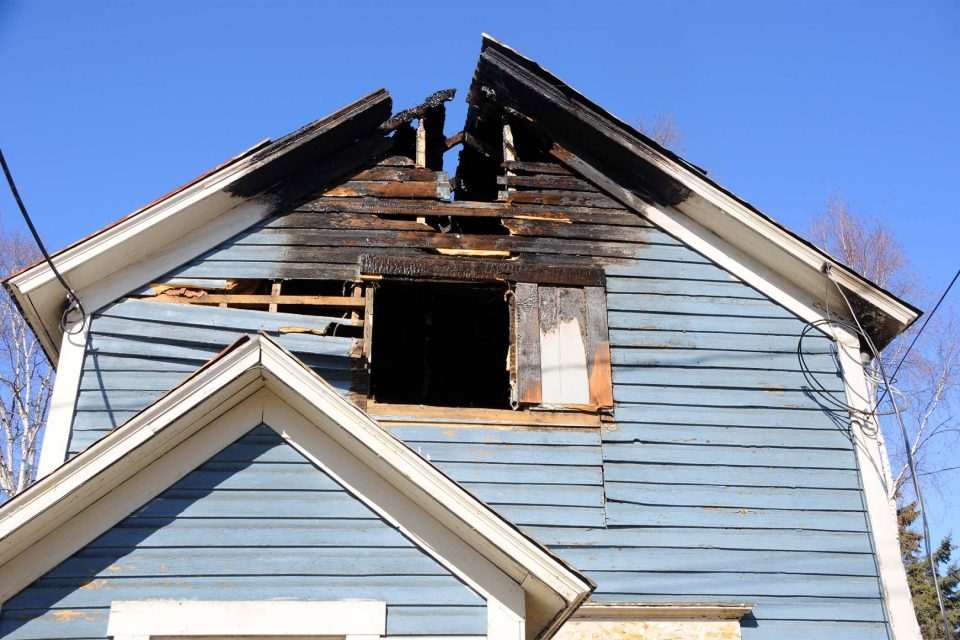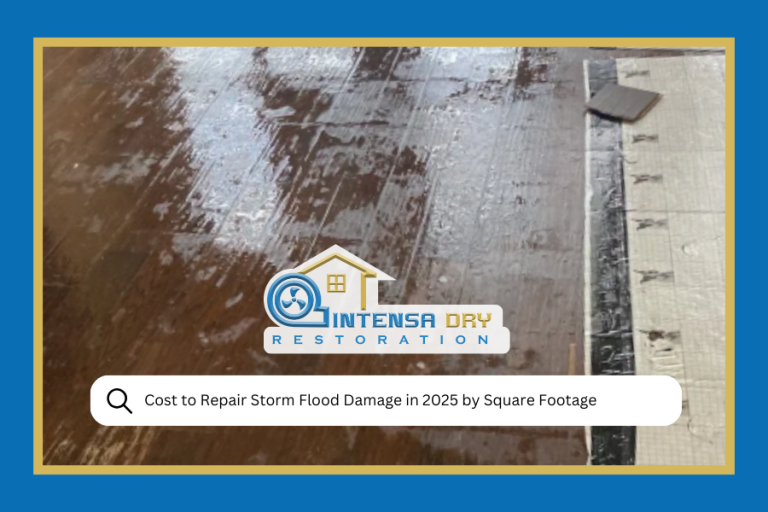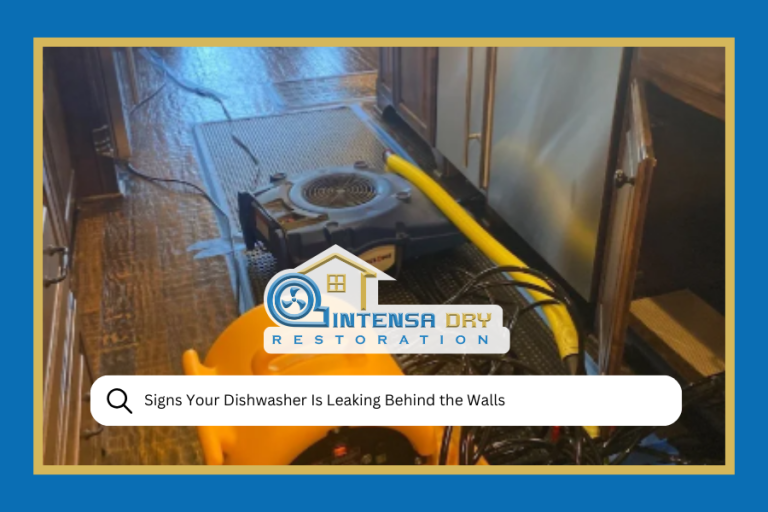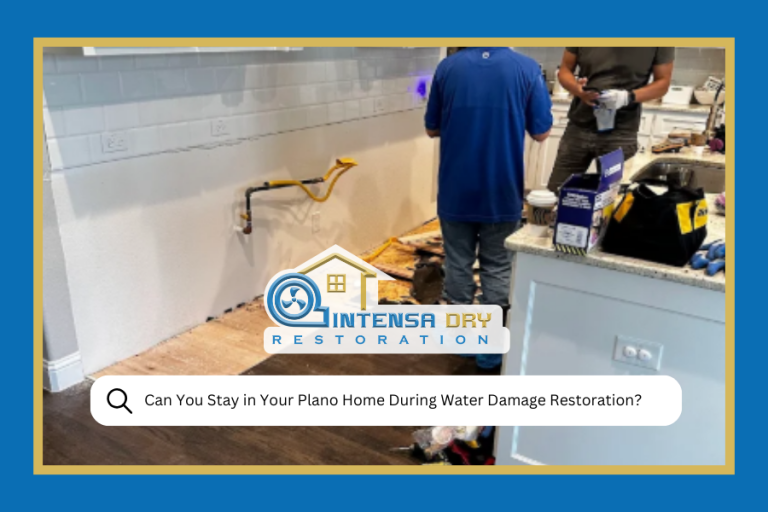Ever wondered how long it takes to bounce back from fire damage? Well, fire damage restoration isn’t a quick fix; it’s a meticulous process that involves several stages. From assessing the damage to completing structural repairs and cleaning up, there’s a lot that goes into restoring a property after a fire. In this blog post, Intensa Dry helps to explore the typical timeline of fire damage restoration, giving you a better understanding of what to expect along the way. So, grab a seat, and let’s dive into the world of fire damage restoration!
Assessment and Inspection

The first step in fire damage restoration is the assessment and inspection of the affected property. Restoration professionals conduct a thorough examination to evaluate the extent of the damage and devise a comprehensive restoration plan. This process involves inspecting structural integrity, assessing smoke and soot damage, and identifying areas requiring immediate attention. Depending on the size and complexity of the property, the assessment phase can take anywhere from a few hours to several days.
Assessment and inspection are vital processes across various domains, ensuring quality, compliance, and safety. These procedures involve thorough examination, evaluation, and analysis of systems, structures, or processes to identify strengths, weaknesses, and areas for improvement. Whether in construction, healthcare, or regulatory compliance, meticulous assessment and inspection protocols are essential for maintaining standards, mitigating risks, and fostering continuous improvement. Through diligent scrutiny and adherence to protocols, organizations can uphold integrity, enhance efficiency, and safeguard stakeholders’ interests.
Board-Up and Tarping
After assessing the damage, restoration teams often proceed with boarding up and tarping the property to secure it from further damage. Boarding up involves covering broken windows, doors, and other openings to prevent unauthorized access and protect the property from elements such as rain and wind. Tarping is done to cover damaged roofs and openings to prevent water intrusion. This phase typically takes a day or two to complete, depending on the size of the property and the extent of the damage.
Board-up and tarping services offer immediate protection for properties against elements or intrusions. Whether due to natural disasters, accidents, or vandalism, these rapid-response measures help mitigate further damage, securing structures until permanent repairs can be made. Board-up involves sealing openings with plywood, while tarping covers damaged roofs or windows, preventing water intrusion. Swift deployment of these services is critical to safeguarding property integrity and minimizing restoration costs in emergencies.
Water Extraction and Drying
Water damage is a common aftermath of firefighting efforts, as water is used to extinguish the flames. Therefore, water extraction and drying are essential components of fire damage restoration. Restoration professionals utilize specialized equipment such as pumps, dehumidifiers, and air movers to extract water and moisture from the property efficiently. The duration of this phase depends on the amount of water present and the drying techniques employed but generally ranges from a few days to a week.
Water extraction and drying are integral components of fire damage restoration services. After a fire, residual water from firefighting efforts can saturate structures, leading to secondary damage like mold growth and structural weakening. Professional restoration teams swiftly extract standing water using specialized equipment, followed by thorough drying with dehumidifiers and air movers. This process prevents further deterioration, inhibits mold growth, and prepares the affected area for reconstruction. Integrating water extraction and drying into fire damage restoration ensures comprehensive recovery, restoring properties to pre-fire conditions efficiently and effectively.
Smoke and Soot Removal
Smoke and soot residues can permeate surfaces and belongings, causing lingering odors and potential health hazards. Removing smoke and soot requires thorough cleaning and deodorization of affected areas and items. Restoration professionals use specialized cleaning agents and equipment to eliminate smoke residues and neutralize odors effectively. The duration of this phase depends on the severity of smoke and soot damage but typically takes several days to complete.
Smoke and soot removal is a crucial step in fire damage restoration. Residue from smoke and soot can permeate surfaces, causing lingering odors and staining if not promptly addressed. Professional restoration services utilize specialized techniques and equipment to thoroughly clean affected areas, eliminating odor and restoring surfaces to pre-fire conditions. Additionally, ensuring proper ventilation during smoke and soot removal aids in expediting the drying process for flooded floors, facilitating efficient restoration of fire-damaged properties.
Structural Repairs and Reconstruction
Once the property has been cleaned and dried, the focus shifts to structural repairs and reconstruction. This phase involves repairing damaged walls, floors, ceilings, and other structural elements to restore the property to its pre-fire condition. Depending on the extent of the damage, structural repairs and reconstruction can be a time-consuming process, ranging from several weeks to several months. Factors such as permit acquisition, material availability, and the complexity of the repairs can impact the duration of this phase.
Structural repairs and reconstruction are essential aspects of restoring properties damaged by disasters like fires or floods. After assessing the extent of damage, professional restoration teams undertake necessary repairs to ensure structural integrity. Reconstruction involves rebuilding damaged areas, including walls, floors, and roofs, using quality materials and expert craftsmanship. Seamless integration of structural repairs and reconstruction services ensures that properties are not only restored aesthetically but also functionally sound. By employing skilled professionals and adhering to safety standards, reconstruction services bring damaged properties back to life, providing peace of mind to homeowners and businesses alike.
Contents Restoration
In addition to structural repairs, fire damage restoration often includes the restoration of contents such as furniture, electronics, and personal belongings. Restoration professionals employ various techniques such as dry cleaning, wet cleaning, and ozone treatment to restore salvageable items to their pre-fire condition. The duration of contents restoration depends on the quantity and condition of the items but can range from a few days to several weeks.
Contents restoration is a critical aspect of property restoration services, particularly after disasters like fires or floods. This process involves salvaging and restoring personal belongings and valuable items affected by damage. Professional restoration teams employ specialized techniques such as cleaning, deodorizing, and repairing to restore items to their pre-loss condition whenever possible. By efficiently restoring contents, homeowners and businesses can minimize losses and preserve sentimental or valuable possessions, facilitating a smoother recovery process.
Final Inspection and Cleaning
Once the restoration work is complete, a final inspection is conducted to ensure that all repairs have been properly executed and that the property meets safety and quality standards. Any remaining debris or dust is cleaned, and the property is prepared for occupancy. This phase typically takes a day or two to complete, depending on the size of the property and the scope of the restoration work.
Final inspection and cleaning mark the culmination of the restoration process, ensuring that all aspects meet quality standards and client satisfaction. Professional restoration teams meticulously inspect the restored property, verifying that repairs, replacements, and cleaning have been completed to specification. This comprehensive evaluation guarantees that no details are overlooked and that the property is safe, functional, and aesthetically pleasing. Additionally, thorough cleaning of the premises eliminates any remaining debris, dust, or residues, leaving the space fresh and sanitized. Final inspection and cleaning signify the successful completion of restoration efforts, providing reassurance to clients and preparing the property for occupancy or use.
FAQs
How long does it take to fix smoke damage?
It can take anywhere from a few days to several months. On average: Minor Fire Damage: Restoration for small, contained fires can take a few days to a week. This includes smoke odor removal, cleaning, and minor repairs.
How long to rebuild after fire?
On average, fire damage restoration can take anywhere from a few weeks to a few months. Minor damage may be restored in a matter of days, while extensive damage could take up to a year in the worst residential cases. We know you want to move back into your home and start to rebuild your life.
How do you restore smoke damage?
To remove soot and smoke from walls, furniture and floors, use a mild soap or detergent or mix together 4 to 6 tbsp. tri-sodium phosphate and 1 cup household cleaner or chlorine bleach to every gallon of warm water. Wear rubber gloves. Be sure to rinse surfaces with clear warm water and dry thoroughly.
How long does it take to change a fire?
Generally, fire restoration can take as little as a week or up to a few months to complete. This largely depends on the extent of the damage. Odor removal and sanitation can be done relatively quickly. However, structural damage and replacing wiring or plumbing may take a few weeks.
Do you have to rebuild after a fire loss?
The short answer is no. If you prefer, you can take your insurance payout and use it to purchase a new home. Though, keep in mind that you will still have to pay off your existing mortgage first. If you do choose to rebuild your home, it’s important to consider all the costs that this process includes.
Conclusion
In conclusion, the duration of fire damage restoration varies depending on factors such as the extent of the damage, the size of the property, and the complexity of the restoration work. While some projects may be completed in a matter of days, others could take weeks or even months to fully restore. By understanding the different phases involved in fire damage restoration and working closely with experienced professionals, property owners can navigate the process more effectively. Ultimately, the goal of fire damage restoration is to restore the property to its pre-fire condition, providing peace of mind and a fresh start for those affected by this devastating event.





